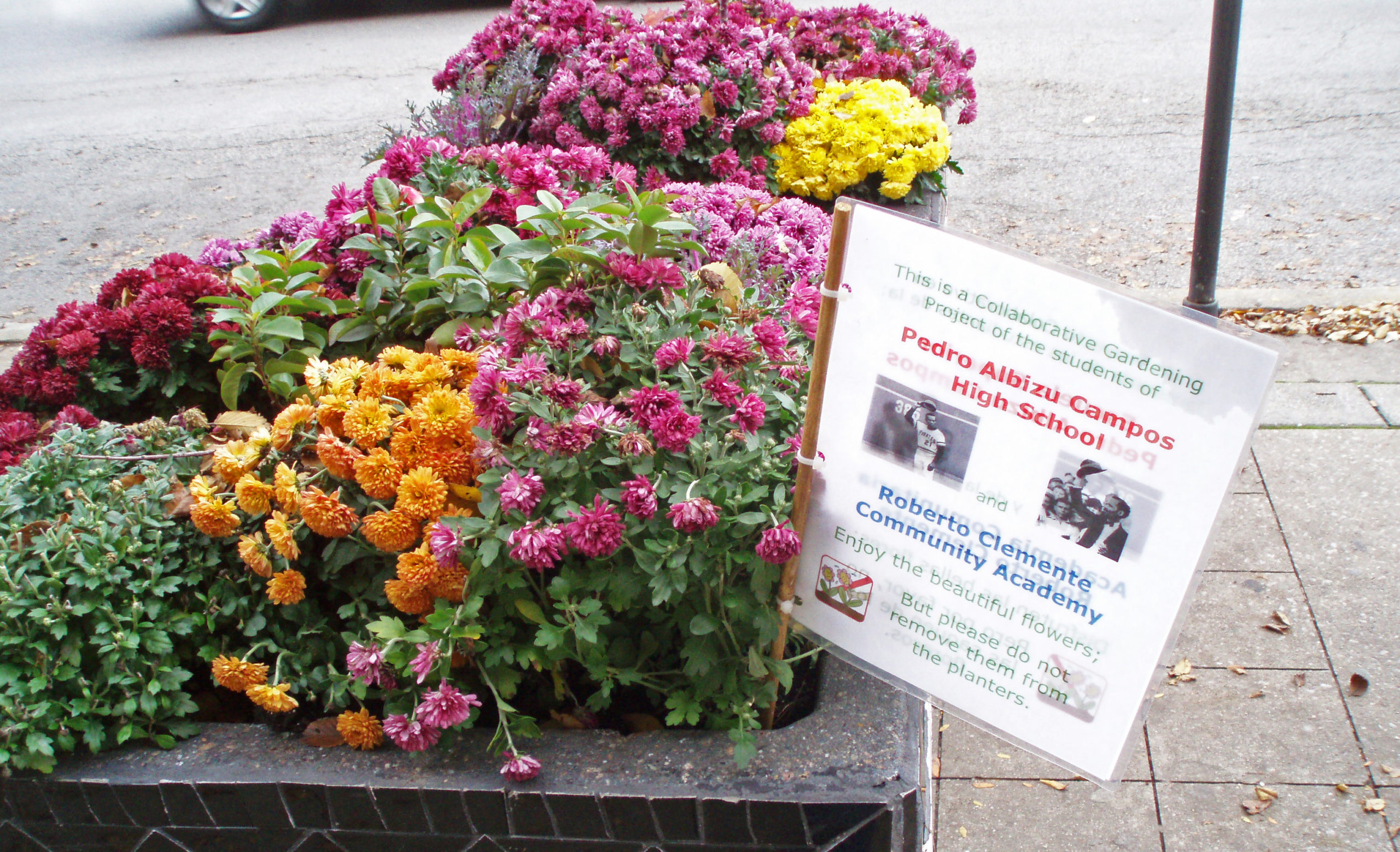Along with the greenhouse, PACHS also partnered with the neighboring Puerto Rican Cultural Center to open La Cosecha, or “The Harvest,” a community produce market.
Located at Division Street and Washtenaw Avenue, the store sells some fruits and vegetables directly from PACHS’ rooftop greenhouse and gardens, including sweet peppers, tomatoes, mint leaves and lettuce.
Luis Rosa, La Cosecha’s manager, said community reaction toward the store has been very positive.
“They say, ‘What took you so long? We’ve needed this,’” he said.
In addition to the high school’s healthy harvest, the store offers three to four nutritional classes a week and holds lectures on the nutritional value of fruits and vegetables.
“I hope the store will serve as a beacon and oasis in the community,” Rosa said.
Currently, La Cosecha operates on a provisional license as a farmers market from Thursday through Sunday each week. However, the store is trying to secure the required permits to open as a fully stocked produce store, which Rosa said could be issued within the next week.
PACHS’ focus on urban agriculture started four years ago when De Jesus, then a science teacher at the school, discovered it was in the northernmost part of a food desert and wanted to exact change.
He was struck by Chicago-based researcher Mari Gallagher’s 2006 study that showed Humboldt Park had some of the highest rates of obesity, diabetes, hypertension, stroke and other diet-related diseases in the city.
In addition, according to research from the Sinai Improving Community Health Survey from 2002-2003, Puerto Ricans in the Humboldt Park and West Town neighborhoods had a 15.3 percent mortality rate from diabetes, which eclipse Chicago’s citywide rate of 1.6 percent.
“We believe there is a causal relationship between food deserts and this high prevalence,” De Jesus said.
Armed with these figures, De Jesus asked student to come up with potential solutions to the food desert problem, and the students responded with one strong answer: “grow our own food.”
Students at PACHS did not want to involve chain supermarkets and grocers, whose departure from the area contributed to the creation of the food desert in the first place, De Jesus said.
So PACHS started looking into building greenhouses on vacant lots but found this would cost more than $200,000.
“Those would be pretty expensive tomatoes,” De Jesus said. However, a student suggested opening a greenhouse on the flat roof of the school building. Four years later, the funding for the project was secured and the 800-square-foot greenhouse was operational in March.
The school also negotiated with the Chicago Park District for urban gardening land.
It initially asked for five acres but only received a half-acre, along with a promise the school could receive an additional acre each year if the garden proved successful.
“Clearly that does not address the needs of a food desert of a community of 37,000 people,” De Jesus said, but added the greenhouse is only the start.
PACHS is looking into opening more greenhouses, and aims to have a much larger space within three or four years.
The school has already started talks with the Puerto Rican Cultural Center, which has room for a 4,000-square-foot greenhouse, and is also looking to acquire space for a 15,000-square-foot greenhouse, De Jesus said.
If the program meets those expansion goals, it can start growing produce commercially.
“We’re quite hopeful,” De Jesus said. “That will resolve the food desert issue in our community and obesity rates will drop.”
The high school is also partnering with DePaul University’s Steans Center to analyze food availability and open produce stands in local mom and pop grocery stores, De Jesus said.
Steans Center Executive Director Howard Rosing said the partnership with PACHS started in the early 2000s and is ongoing.
“We try to figure out how DePaul can support local food production … especially in low-income neighborhoods,” he said.
Currently, PACHS is in discussions with 10 local stores, and has discovered many do not sell produce because it is perishable.
De Jesus wants to prove to stores that more nutritious produce can make money like non-perishable food items.
Part of the proceeds from produce stands would go directly to the stores, De Jesus said, limiting financial liability for the retailers.
The school expects to open its first stands in about six months.
Medill School of Journalism – Quarter 1
Methods Reporting


